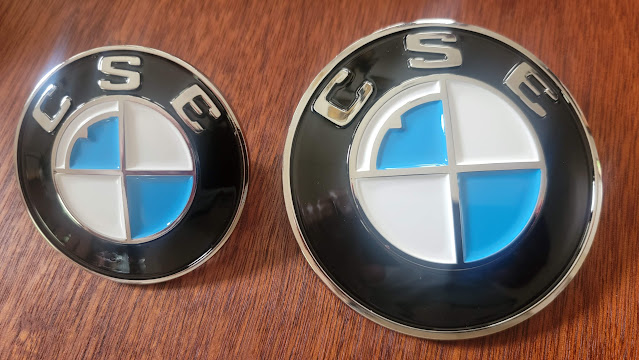I've removed the driveline from a 1973 BMW 3.0 CS (coupe, sport) and replaced
it with the motor and batteries from a wrecked Tesla Model S to turn this old
classic into an all-electric vehicle. For the answer to why I'd do this and other frequently asked
questions, checkout the
FAQ page.

|
|
This is my car BEFORE I started working on it
|

|
| How it appears today. It may not look as good but it doesn't have any rust and runs a LOT better than before. |

|
|
Under the rear of my car -- you can see the Tesla drive unit and new,
lower trunk where the differential, spare tire, and fuel tank used to be
|
The Plan
All Electric
300 Horsepower
200 Mile range
Original appearance
4 seats and a useable trunk
Tesla Model S drivetrain
Power brakes, power steering, A/C, heat
Nicely integrated digital instrumentation
Fitting the Tesla drive unit to this car required cutting up the back of the
car and welding in new supports for the Tesla motor, then welding in a new
trunk.

|
|
The Tesla drive unit mounted in my car before the new trunk was welded
in
|
The car charges from a J1772 plug port where the old fuel filler was
located. The batteries are located in front and back (10 in front, 4
in back). It has 297 horsepower and over 200 miles of range.

|
|
Charging the car. Charging can take from 3 to 9 hours, depending
on input amperage.
|
To monitor all the systems and know remaining range, etc., I
programmed a custom dash program that is displayed in the hole where the
tachometer used to live.

|
|
The dash app provides info on speed, energy, range, temperature, gear,
etc.
|

|
|
I wrote many different display modes in the app, including an analog
speedometer and power meter
|
Along the way, the car required a fair amount of rust repair and general
restoration so I stripped it all and media blasted it to bare
metal.

|
|
As my car was being media blasted.
|
Try
this page for the current status
of the project. For more details, checkout
the blog.

|
|
The engine is replaced with a custom structure that holds 10 Tesla Model
S batteries
|

|
|
In the back are 4 more Tesla Model S batteries, 12v battery, fuse box,
contactor and precharge box, charger, DC/DC converter, and J1772 plug
|

|
|
The business end of the 10 Model S batteries, wired in series for about
250 VDC, plus another 100 volts in the rear for 350 total DC volts |

|
|
On the other side are the coolant connections for battery cooling
|

|
|
The Tesla Model S drive unit (motor, inverter, differential) adapted to
the BMW for rear-wheel drive
|

|
|
Tesla iBooster power brakes, Mini Cooper electric power steering pump,
radiators, 12v fuses, etc all in place
|

|
|
Cooling, P/S, etc. all connected and operational
|

|
| The custom shifter mechanism that converts linear movement of the original BMW shifter into electric signals that can be sent to the Tesla drive unit |

|
|
Just some of the electronics. The blue relays are controlled by the
shifter mechanism and send gear selection signals to the drive unit
controller as well as the parking brake linear actuator. The microcomputer on top sends and receives information over CANbus to/from the DUC and renders the information on digital
gauges.
|

|
|
In addition to viewing status on my digital gauges, I can monitor and
program charging and battery health via the Orion BMS software
|

|
|
Drove it to a car show for EVs
|
Now that the EV conversion is finished, I just need to restore the entire car. No big deal.
For more details, check out the blog posts.





















